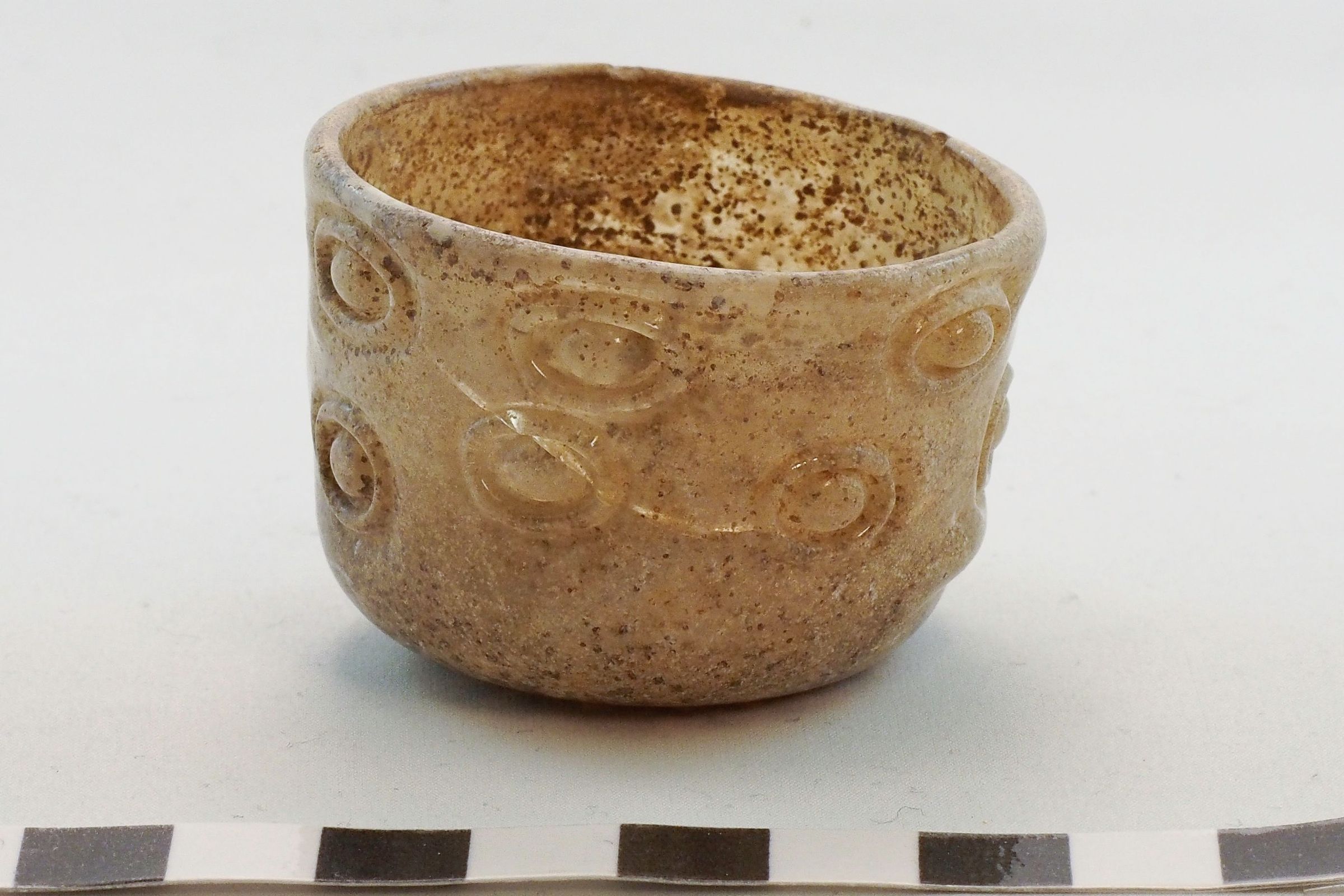Eye Bowl
Name/Title
"Eye" BowlEntry/Object ID
11NE-Mi36-174Description
The rim is round and uneven. The squat cylindrical body has straight walls that curve in towards the base. Along the walls are two uneven horizontal rows of impressed oval disks with central bosses, creating an "eye"-shape. The top row has six "eyes" and the bottom row has seven. The base is flat with a pontil mark. The vessel is intact with trace iridescence and cracks which run between three of the "eyes".Use
TablewareContext
Vessels with this impressed ornamentation have been identified on vessels found in Iran, Iraq, and Egypt. The ornamentation was believed to be made in parts of Western Asia and Egypt until the eleventh century CE, sometimes called a Guilloche pattern. However, this type of ornamentation originated in Sasanian Iran in the sixth to seventh centuries CE.Made/Created
Date made
800 CE - 1000 CETime Period
Islamic Golden AgeEthnography
Culture/Tribe
Near Eastern - Islamic

